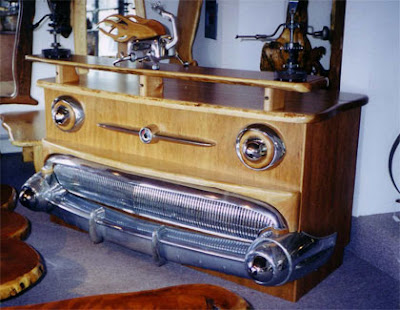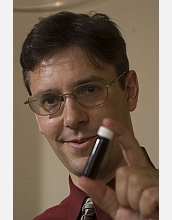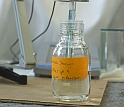1. Minimise your vehicle use
Vehicles are least fuel efficient and most polluting at the start of trips and on short trips. One reason for this is that catalytic converters (which reduce air pollution emissions) do not operate properly until they have warmed up. Trips of less than five kilometres generally do not allow the engine to reach its peak operating temperature.
Plan to do a number of errands in one trip rather than several trips and save both time and fuel. Try to avoid short vehicle trips by walking or cycling. This will save over a quarter of a kilogram of greenhouse gas emissions per kilometre of vehicle driving it replaces, as well as give you healthy exercise.
2. Drive in the right gear
Driving in a gear lower than you need wastes fuel, and letting the engine labour in top gear on hills and corners is also wasteful. In a manual vehicle, change up gears as soon as the car is comfortable with the higher gear but without accelerating harder than necessary.
Automatic transmissions will shift up more quickly and smoothly if you ease back slightly on the accelerator once the car gathers momentum. Avoid the use of power options which drop the car into a lower gear and therefore use more fuel.
3. Drive smoothly
Stop/start driving is much less efficient and more polluting than driving at a constant speed. Avoid travelling during peak-hours and on congested roads whenever possible.
Take it easy on the accelerator - more revs equals more petrol use. Drive at a good distance from the car in front so you can anticipate and travel with the flow of traffic. This avoids unnecessary acceleration and frequent repetitive braking that ends up wasting fuel. It's also far safer. If you see traffic stoppages ahead, first take your foot off the accelerator and let the engine's drop in power slow the vehicle, particularly by also changing to a lower gear. Don't continue to drive at the same speed and applying the brakes at the last minute. Getting back to cruising speed while the car is still moving uses far less petrol than stopping and then starting again.
4. Minimise fuel wasted in idling
Most cars don't need to be "warmed up" by idling before setting off. This simply wastes fuel. Start your car when you are ready to go. Once on the road, minimise fuel wasted in idling by stopping the engine whenever your car is stopped or held up for an extended period of time. By having the engine switched off, even for a short period, you will save more fuel than is lost from the burst of fuel involved in restarting the engine. The net increased wear and tear from this practice is negligible.
5. Don't Speed
Fuel consumption increases significantly over about 90 km/h. At 110 km/h your car uses up to 25 per cent more fuel than it would cruising at 90 km/h. If your car is fitted with cruise control, using it during highway driving will help to maintain a steadier speed, which will save fuel.
6. Minimise aerodynamic drag
Additional parts on the exterior of a vehicle such as roof racks and spoilers, or having the window open, increases air resistance and fuel consumption, in some cases by over 20 per cent at higher speeds. Take off roof and bike racks when not in use. If you have to use roof racks, load them carefully to help minimise wind resistance or use a streamlined roof box.
7. Look after your vehicle's tyres
Inflate your vehicle's tyres to the highest pressure recommended by the manufacture and make sure your wheels are properly aligned. Looking after your tyres will not only reduce your fuel consumption it will also extend tyre life and improve handling.
8. Use airconditioning sparingly
Airconditioners can use about 10 per cent extra fuel when operating. However, at speeds of over 80 km/h, use of airconditioning is better for fuel consumption than an open window as this creates aerodynamic drag. If it is hotter inside your car than outside when you start a trip, drive with the windows down for a few minutes to help cool the car before starting the airconditioning.
9. Travel light
The more weight a vehicle carries, the more fuel it uses..Don't use your car as a mobile store room. Leave heavy items like tools and sports equipment at home when you don't need them on a trip.
10. Keep your vehicle in good condition
Keep your vehicle well tuned and regularly maintained. Get your car serviced at the intervals specified in the manufacturer's handbook.
Use the petrol that is recommended for your vehicle by the manufacturer. If you use regular unleaded in a car designed to run on premium unleaded you can expect slightly less performance and fractionally higher consumption. Using premium unleaded petrol in a car designed for regular unleaded may give better fuel consumption in some newer vehicles but it is unlikely to offset the extra cost of the fuel.
Vehicles are least fuel efficient and most polluting at the start of trips and on short trips. One reason for this is that catalytic converters (which reduce air pollution emissions) do not operate properly until they have warmed up. Trips of less than five kilometres generally do not allow the engine to reach its peak operating temperature.
Plan to do a number of errands in one trip rather than several trips and save both time and fuel. Try to avoid short vehicle trips by walking or cycling. This will save over a quarter of a kilogram of greenhouse gas emissions per kilometre of vehicle driving it replaces, as well as give you healthy exercise.
2. Drive in the right gear
Driving in a gear lower than you need wastes fuel, and letting the engine labour in top gear on hills and corners is also wasteful. In a manual vehicle, change up gears as soon as the car is comfortable with the higher gear but without accelerating harder than necessary.
Automatic transmissions will shift up more quickly and smoothly if you ease back slightly on the accelerator once the car gathers momentum. Avoid the use of power options which drop the car into a lower gear and therefore use more fuel.
3. Drive smoothly
Stop/start driving is much less efficient and more polluting than driving at a constant speed. Avoid travelling during peak-hours and on congested roads whenever possible.
Take it easy on the accelerator - more revs equals more petrol use. Drive at a good distance from the car in front so you can anticipate and travel with the flow of traffic. This avoids unnecessary acceleration and frequent repetitive braking that ends up wasting fuel. It's also far safer. If you see traffic stoppages ahead, first take your foot off the accelerator and let the engine's drop in power slow the vehicle, particularly by also changing to a lower gear. Don't continue to drive at the same speed and applying the brakes at the last minute. Getting back to cruising speed while the car is still moving uses far less petrol than stopping and then starting again.
4. Minimise fuel wasted in idling
Most cars don't need to be "warmed up" by idling before setting off. This simply wastes fuel. Start your car when you are ready to go. Once on the road, minimise fuel wasted in idling by stopping the engine whenever your car is stopped or held up for an extended period of time. By having the engine switched off, even for a short period, you will save more fuel than is lost from the burst of fuel involved in restarting the engine. The net increased wear and tear from this practice is negligible.
5. Don't Speed
Fuel consumption increases significantly over about 90 km/h. At 110 km/h your car uses up to 25 per cent more fuel than it would cruising at 90 km/h. If your car is fitted with cruise control, using it during highway driving will help to maintain a steadier speed, which will save fuel.
6. Minimise aerodynamic drag
Additional parts on the exterior of a vehicle such as roof racks and spoilers, or having the window open, increases air resistance and fuel consumption, in some cases by over 20 per cent at higher speeds. Take off roof and bike racks when not in use. If you have to use roof racks, load them carefully to help minimise wind resistance or use a streamlined roof box.
7. Look after your vehicle's tyres
Inflate your vehicle's tyres to the highest pressure recommended by the manufacture and make sure your wheels are properly aligned. Looking after your tyres will not only reduce your fuel consumption it will also extend tyre life and improve handling.
8. Use airconditioning sparingly
Airconditioners can use about 10 per cent extra fuel when operating. However, at speeds of over 80 km/h, use of airconditioning is better for fuel consumption than an open window as this creates aerodynamic drag. If it is hotter inside your car than outside when you start a trip, drive with the windows down for a few minutes to help cool the car before starting the airconditioning.
9. Travel light
The more weight a vehicle carries, the more fuel it uses..Don't use your car as a mobile store room. Leave heavy items like tools and sports equipment at home when you don't need them on a trip.
10. Keep your vehicle in good condition
Keep your vehicle well tuned and regularly maintained. Get your car serviced at the intervals specified in the manufacturer's handbook.
Use the petrol that is recommended for your vehicle by the manufacturer. If you use regular unleaded in a car designed to run on premium unleaded you can expect slightly less performance and fractionally higher consumption. Using premium unleaded petrol in a car designed for regular unleaded may give better fuel consumption in some newer vehicles but it is unlikely to offset the extra cost of the fuel.















































